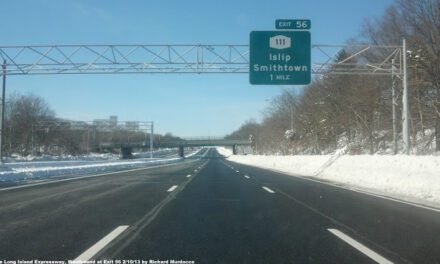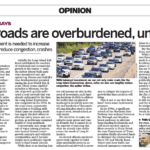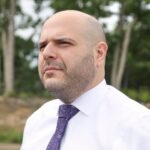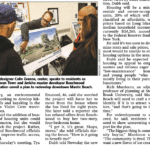The following was written for the Long Island Press, and published on May 25, 2016. You can read the original here.
A troubling new trend in Suffolk County is pitting environmentalists against civic groups: clear cutting forested open spaces to make way for solar panels. The times they are a-changin’.
It used to be that environmentalists and civic leaders would unite to preserve what little scraps of open, vacant and forested land Long Island had left. Back in more radical days resident activists would even chain themselves to the trees.
More recently, the moment some development project with an ironic name like Shady Brook Meadows would get zoning approval, opponents would file an Article 78 lawsuit to appeal it.
These days, civics and environmentalists are at odds with one another. Solar power, the promised salvation for many homeowners’ utility woes, has been scaled up to the commercial level. As of last summer, LI had more than 10,000 installations of solar panels on resident rooftops, commercial warehouses and free-standing arrays. The Suffolk County Planning Commission, in a proactive move, gave regional solar arrays a welcome jolt by making siting and placement recommendations.
From there, the picture gets a bit cloudier.
As highlighted by recent cases involving the clearing of hundreds of acres of woodlands to make way for solar panels, the issue is not cooling off. From rumblings of a solar proposal for the 800-acre Shoreham Nuclear Power Plant site, which would have the potential to generate 50 megawatts of power on roughly 300 acres of the site, to a 60-acre solar project already underway in Shoreham’s DeLalio Sod Farm, points east of Route 110 are facing extreme developmental pressures—from a relatively benign, eco-friendly use.
In one instance, Brookhaven Supervisor Ed Romaine, a Republican, is right to argue against the potential clearing of 130-acres of Suffolk County-owned land in both Bellport and Yaphank for solar panels. The cash-strapped county is claiming that the town’s opposition is premature and the project will conform to the county’s own adopted guidelines, but the jury is out. Given Suffolk’s shoddy track record with developing land in Yaphank a few years ago, who knows what will happen.
Meanwhile, in Mastic, Jerry Rosengarten, a private developer, has proposed turning a 100-acre wooded parcel near the headwaters of the Forge River into a solar array. What is surprising is that Citizens Campaign for the Environment (CCE), an environmental group that is typically fiercely protective of all things green, supports the plan, reportedly calling the 19.2-megawatt solar array a “beneficial and prudent use of the land.”
CCE is right that the land can be put to a more intensive use, as determined by the parcel’s current as-of-right zoning. When residents protest a solar array proposal, it’s important they consider underlying land use restrictions. Is a solar farm a worse usage than 50 single-family homes or a commercial office complex?
“Solar is technically limited to areas adjacent to transmission lines and to substations,” Richard Amper, executive director of the Long Island Pine Barrens Society told the Long Island Advance. “So all government has to do is map those corridors and select the most appropriate places for solar and they haven’t done it.”
But clearing trees for solar usage isn’t exactly sound planning. There are plenty of already-disturbed sites that would be appropriate for an array. And there’s another concern: supply. Apparently there is enough surplus energy to meet the Island’s needs through at least 2028.
The New York State Public Service Commission (PSC) issued a press release last week touting a staff report on the state’s electric system that the generation capacity is currently adequate. It said that “transmission and distribution utility owners are prepared to meet expected customer demands this summer.” What’s more, it added that it expects wholesale electricity prices to be lower or stable through this summer as well.
Meanwhile, LI’s building trades and, unsurprisingly, Caithness LLC, try to ramp up support for Caithness II, a 750-megawatt natural gas-fired power plant proposed for Yaphank. But PSEG LI says it’s unnecessary. There is more than enough power to go around—almost 411 megawatts—and that figure will rise to 488 megawatts when projects already in the energy pipeline come online by 2020. For reference, one megawatt can power roughly 164 homes.
As a whole, the state is trying to move away “from decades of rate-setting decisions which encouraged investment in large, centralized power systems,” according to the PSC. New York’s electric grid was built during the last century to meet the peak electric demand that occurs only a few days each year, resulting in an energy and financially inefficient system. Under new regulations, utilities in New York will be required to develop a more efficient and cleaner network that uses energy resources like solar, geothermal, wind, fuel cells, and other energy alternatives.
Long Island has ample power supply now, yet industry insiders are pushing old power generation technology that may or may not be redundant—and at great expense to all Long Islanders with the exception of the Longwood School District, which would greatly benefit from the millions of dollars in annual pilot payments a new plant would generate. On top of that, the commercial solar sector is booming. But instead of siting projects on brownfields and other assorted sites ripe for repurposing, privately owned vacant parcels are being pitched, much to the consternation of local residents and civic groups.
What the Island truly needs is a frank, honest assessment of the region’s energy needs that cuts through the quagmire of mixed messaging residents are frequently exposed to.
Our current maze of industry-backed studies, rhetoric and NIMBY-fueled fears is not a proper environment to conduct policymaking. Let’s brighten up the process with clear, data-driven analysis. But one thing is certain: Cutting down trees for green energy misses the point. If we want to let the sunshine in, we have to find a better way.
Rich Murdocco writes about Long Island’s land use and real estate development issues. He received his Master’s in Public Policy at Stony Brook University, where he studied regional planning under Dr. Lee Koppelman, Long Island’s veteran master planner. Murdocco is a regular contributor to the Long Island Press. More of his views can be found on TheFoggiestIdea.org or follow him on Twitter @TheFoggiestIdea.












One the most urgent and revealing controversies around.
Ever since the pseudo-ideology we call “environmentalism” replaced the Ecology Movement (a.k.a. Conservation a.k.a. Nature), a vague and vacuous kind of verbiage (feigning “realism” but always superficial, never comprehensive or focused) seems to have settled over all analysis of issues affecting the planet. Nothing is seen in its true context. The debased discourse typical of mainstream media editorials and public relations firms passes for hard-nosed thinking. I wonder how many “environmentalists” even know what a tree is these days—let alone a forest?